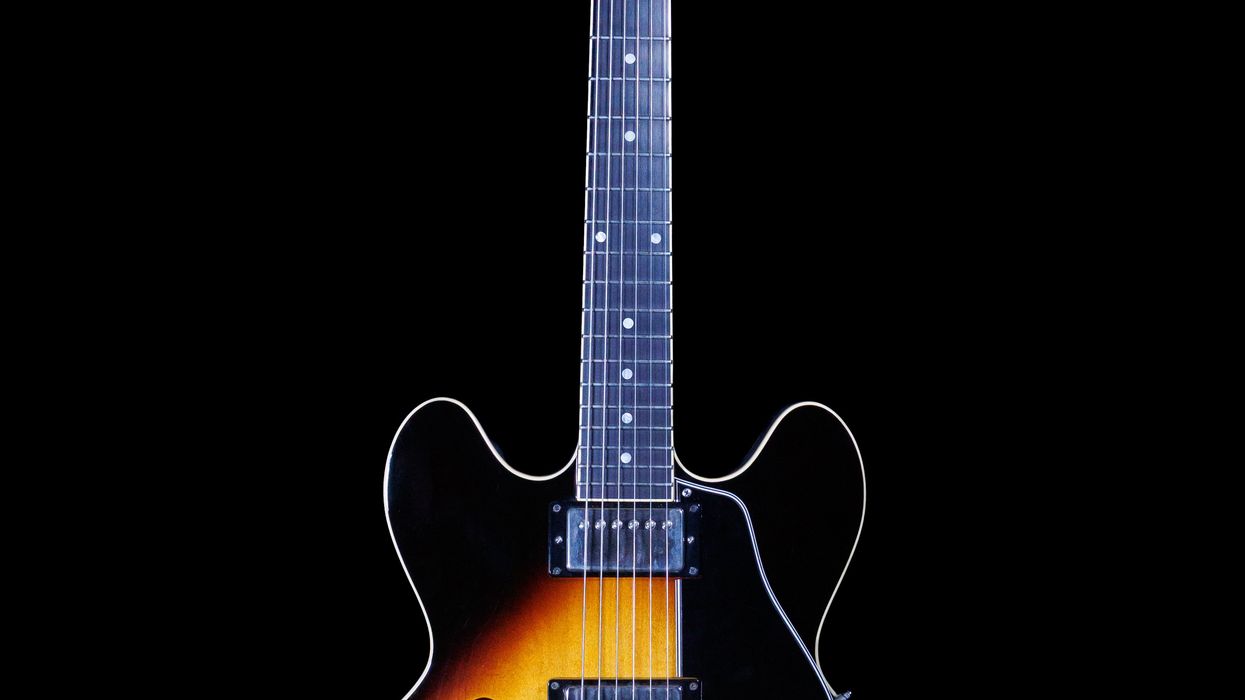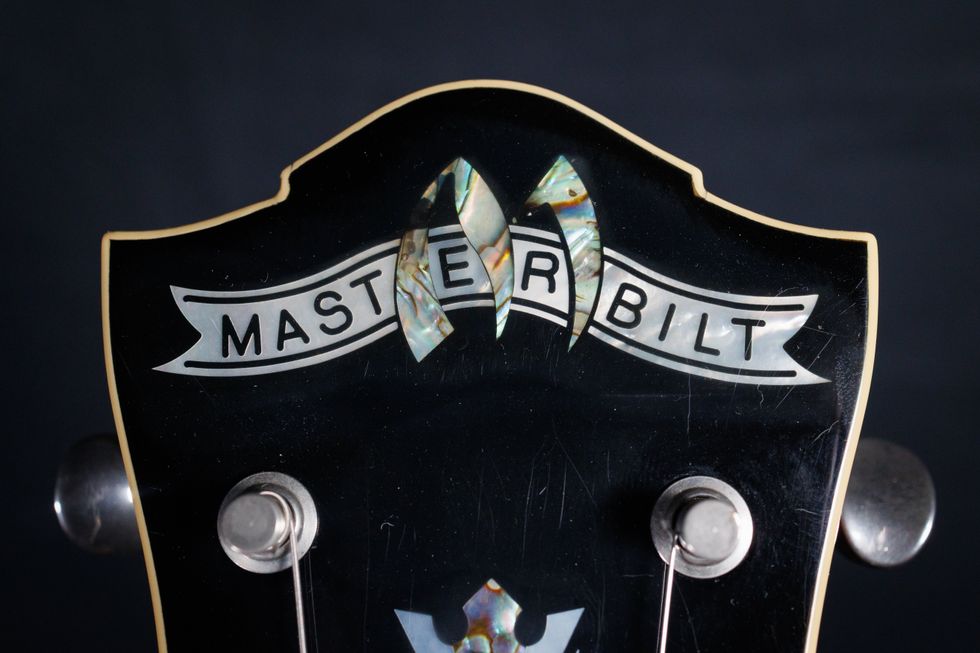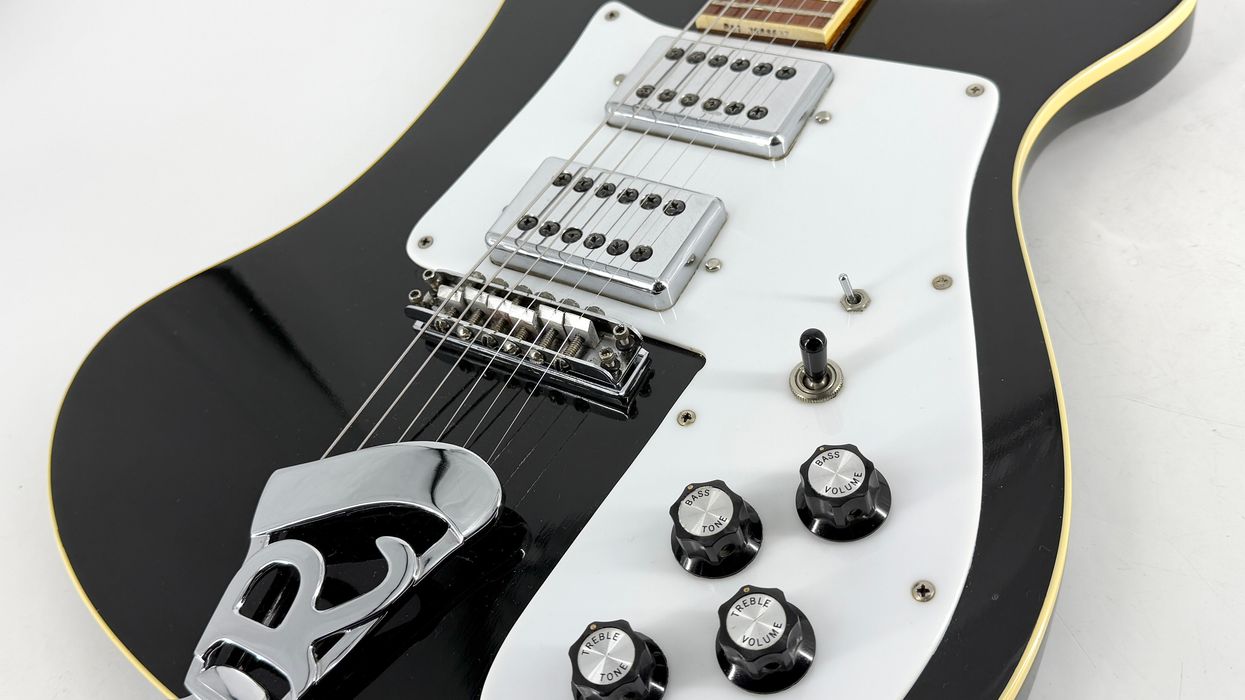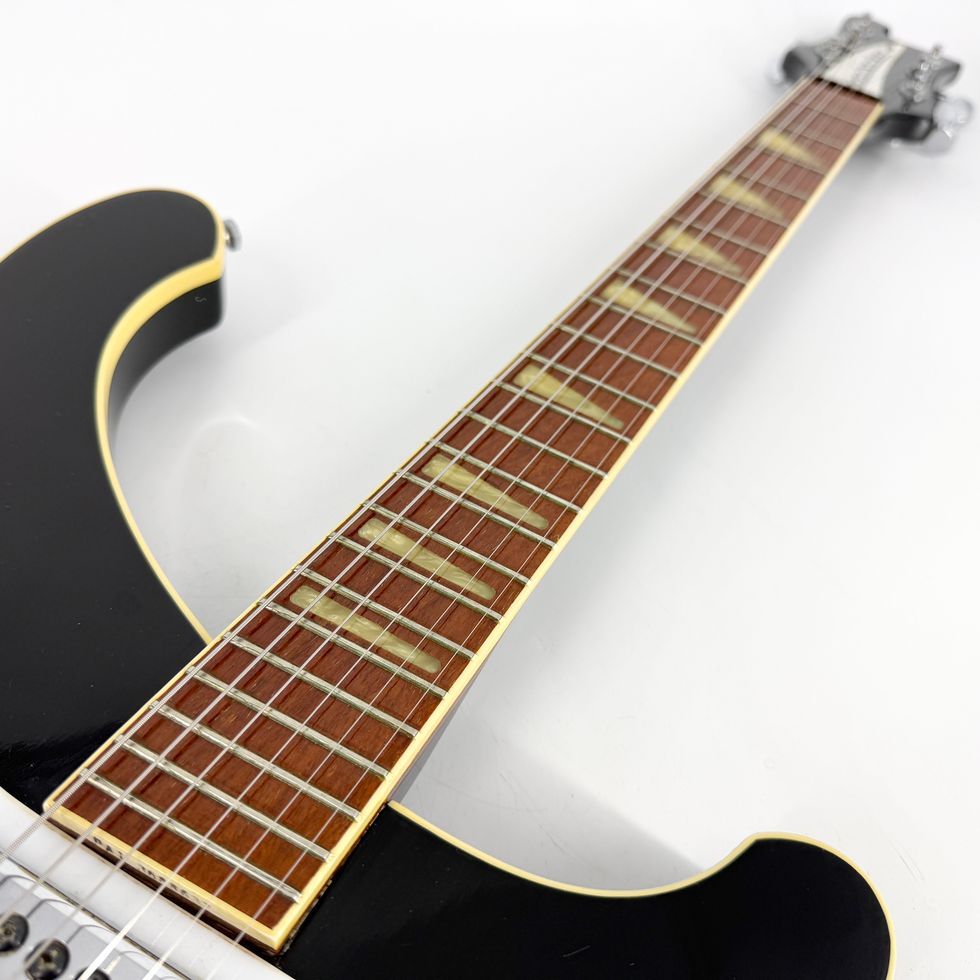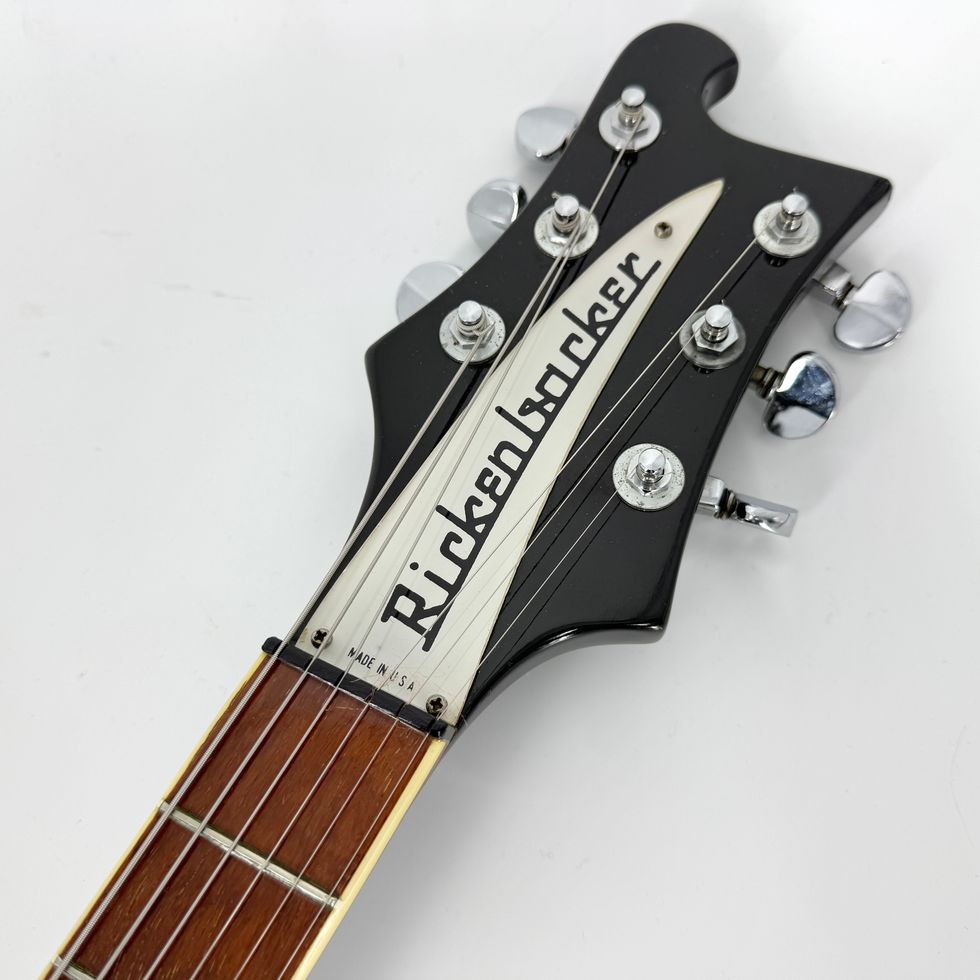It’s a 14-fret dreadnought acoustic with a spruce top and rosewood back and sides. It’s appointed with beautiful reduced-hexagon abalone inlays, matching binding, and multi-stripe detail throughout. The logo reads vertically instead of horizontally, and it has a rich, powerful tone. Surely I’m referring to an heirloom-quality, America-made Martin D-41, right?
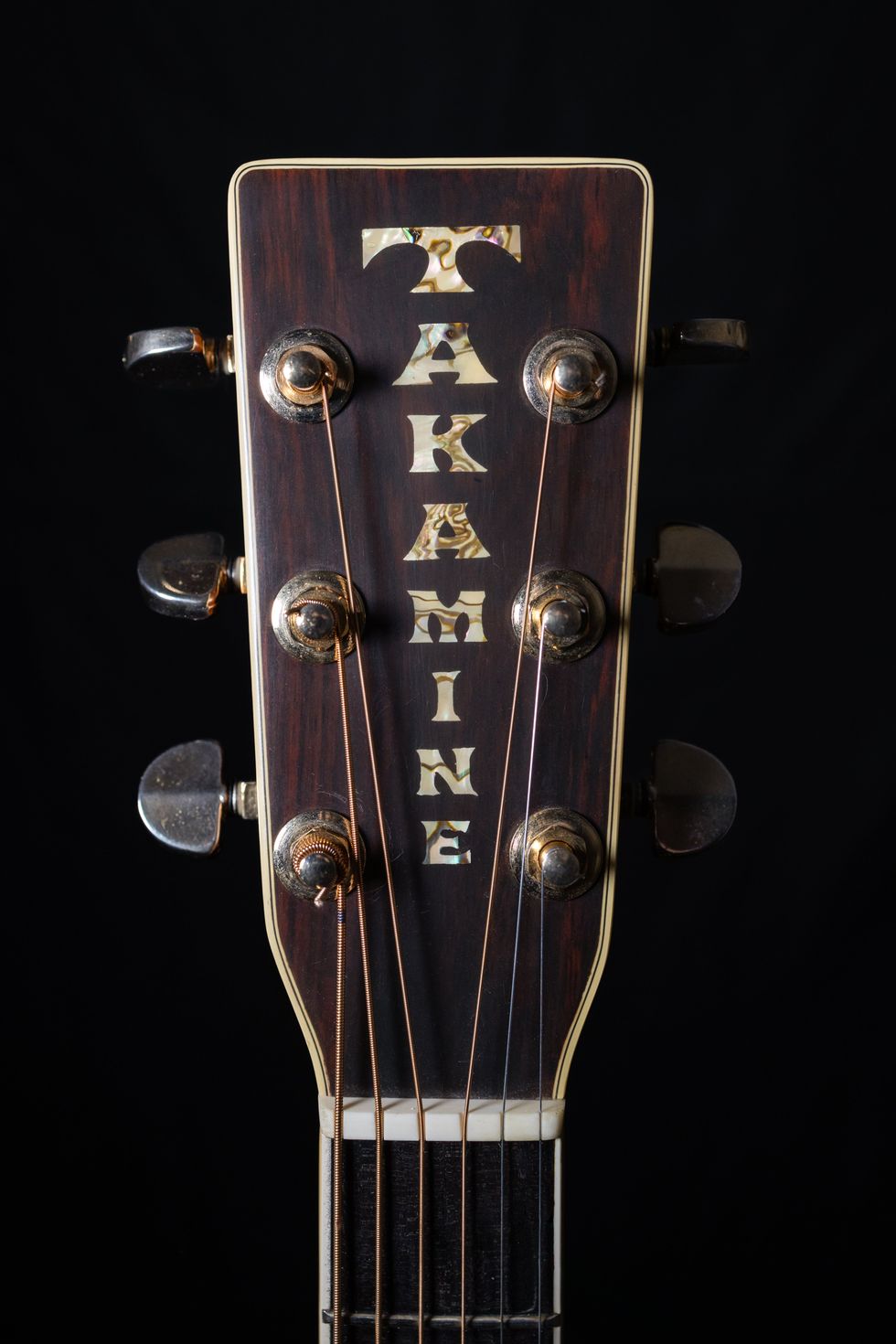
On the headstock, Takamine imitated the style of the vertical Martin logo. Takamine took the same approach to their Guild and Gallagher copies.
Nope! I’m talking about the delightful 1978 Takamine F-450S-A, an unashamed, fractions-of-an-inch-accurate copy of one of Martin’s most prized designs. According to Takamine’s 1976 catalog, the F-450S-A was “the finest guitar made by Takamine,” featuring genuine Pacific abalone pearl inlaid by hand. The catalog boasts of the experienced older craftsman slowly teaching young apprentices the “Takamine way” to make guitars. While there can be no doubt the F-450S-A is a fine instrument, the Takamine way sure looks a lot like the Martin way to us!
A revealing statement can be found just a page further in the catalog: “To the eye and to the ear, a Takamine matches any guitar on the market today.” You don’t say!
“To the pocketbook however, a Takamine is no match. Play and compare. You’ll find the sound you want at about a third the price.”
The logic was simple: A quality Martin clone made cheaply in Japan could easily be marketed to American consumers who couldn’t afford the real thing. While researching, I came across this illuminating post on The Unofficial Martin Guitar Forum: “Being from Western North Carolina and picking out with older folks on porches, I could never afford a Martin. When we would be picking, others would come up and say I like your Mar... tin... and then stop and look like they took a bite out of a rotten tater.”
Takamine mimicked other brands, too. The same 1976 catalog features the name “Takamine” contorted into the distinctive “peaked” Guild logo. Not too long ago, we had a Takamine-made Gallagher copy come into Fanny’s House of Music, with the famous Gallagher “G” subtly morphed into a “T.” This period in the 1970s is often called the “lawsuit era,” a term that refers to a 1977 lawsuit filed by Gibson against Ibanez for infringing on their headstock design. The phrase “lawsuit era” might suggest that American companies were suing their Japanese counterparts left and right, but the truth is, lawsuits were rare, and Gibson and Ibanez settled out of court. There was no lawsuit against Takamine for their headstocks, although Martin did send a cease and desist letter. Soon, Takamine, Ibanez, and other Japanese companies began cranking out great original designs of their own, and the lawsuit era was over.
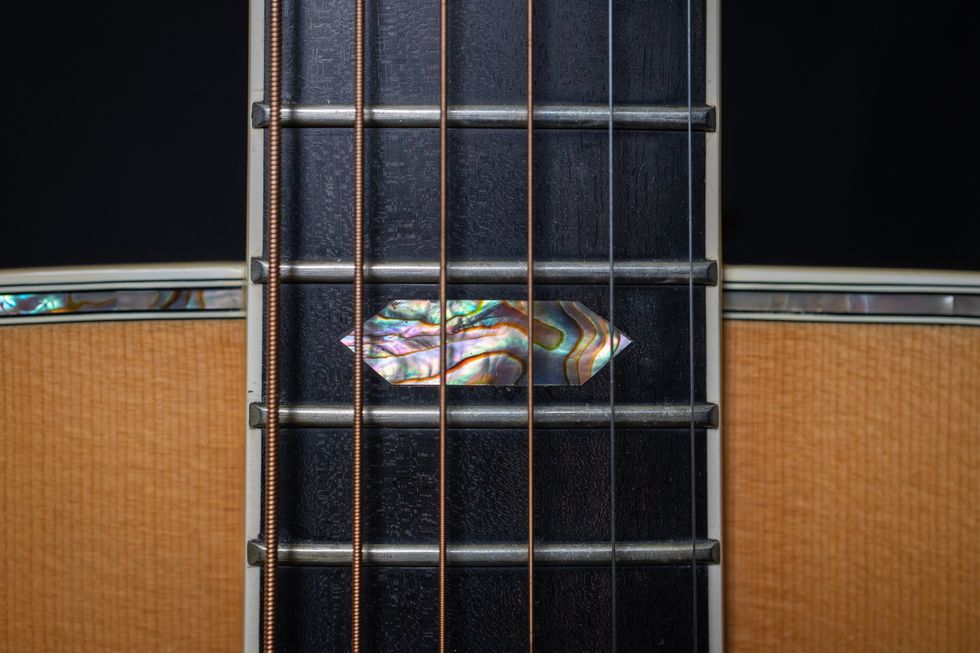
The oblong-hexagon abalone inlays on the fretboard are another feature of this guitar that resembles a Martin.
According to the Takamine catalog, the back and sides of our F-450S-A are made of jacaranda, and, boy, did that ever send me down a rabbit hole! It sure looks a lot like rosewood to me. Besides, with everything else on this guitar being such a close copy of a D-41, why would Takamine use an entirely different species of wood for the back and sides? Jacaranda is a genus of 49 species of flowering plants, and rosewood belongs to the genus Dalbergia, which famously does not flower. Everyone knows that. (Just kidding.)
As it turns out, the journey the word “jacaranda” takes from Portuguese to Japanese to English can leave us with a term that generally means “rosewood,” even though jacaranda is a very different species. Washburn, Tokai, and other Japanese manufacturers sometimes even listed fretboard material as “Jacaranda (Brazilian Rosewood),” which is nearly enough to turn my brain to mush! At a certain point, one has to admit defeat and begin climbing out of the rabbit hole. We may never know exactly what species of wood we’re dealing with here, but who cares when the guitar sounds this good?
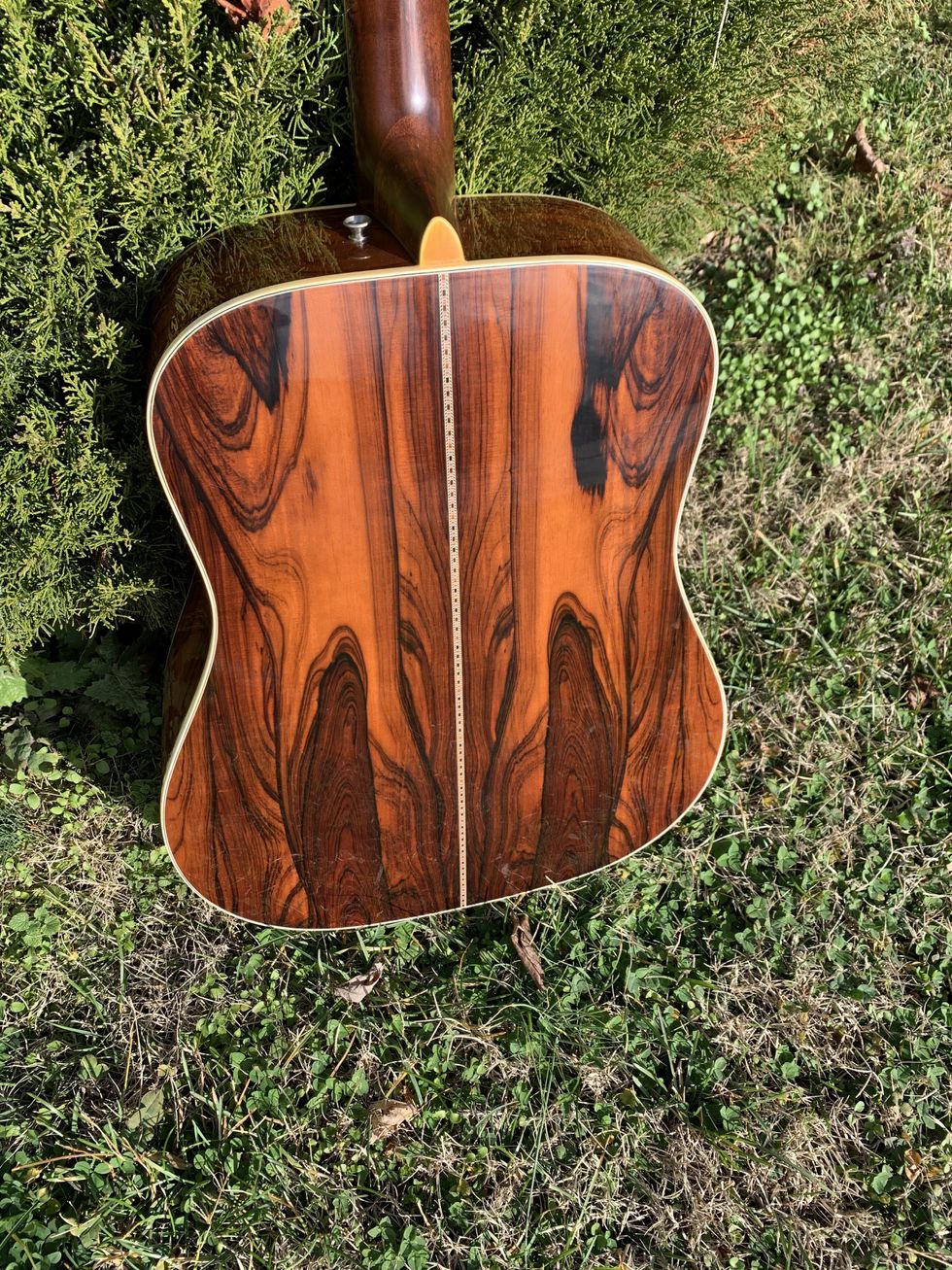
The Takamine catalog says the back and sides are jacaranda, a colloquialized umbrella term that often just means “rosewood.”
The neck of our Tak’ has a comfortable medium-C shape and nice low action. It’s clearly a well-built instrument with good volume and depth of tone. It’s in outstanding condition for its age, with hardly a mark on it, which means there’s a lot of songs in this old gal! It may be a mere “knock-off,” but don’t knock it ’til you try it. It’s a great guitar and I can’t wait to see who it inspires next.


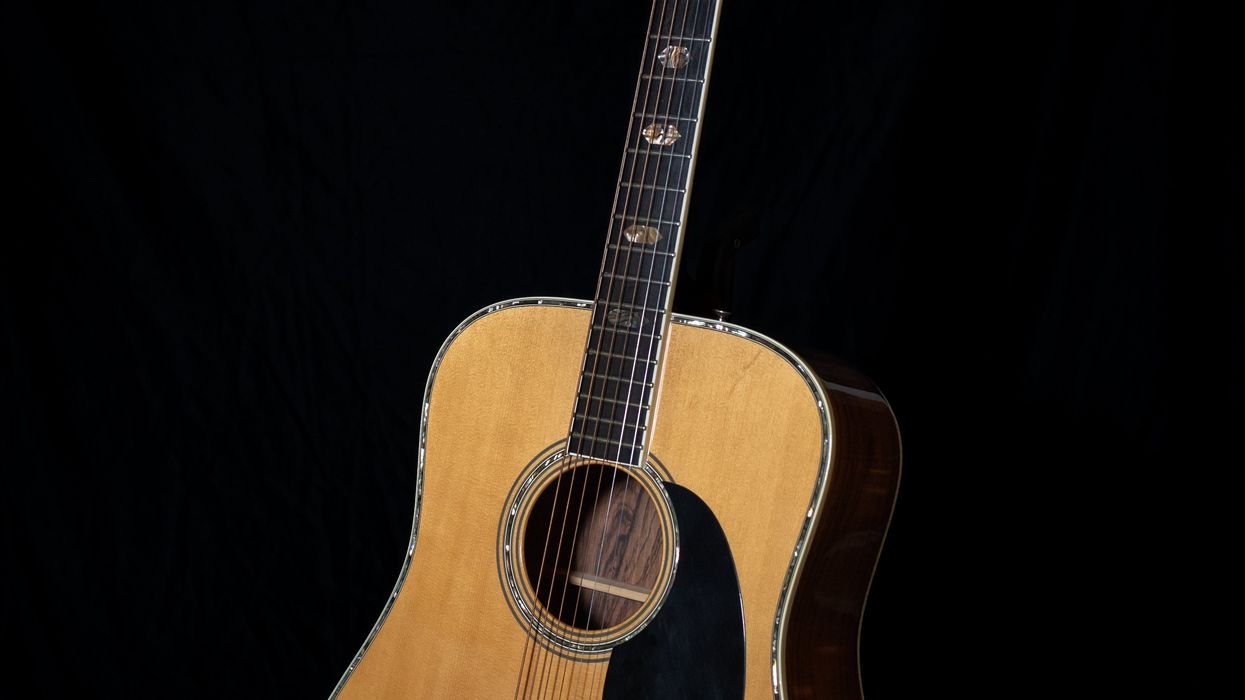

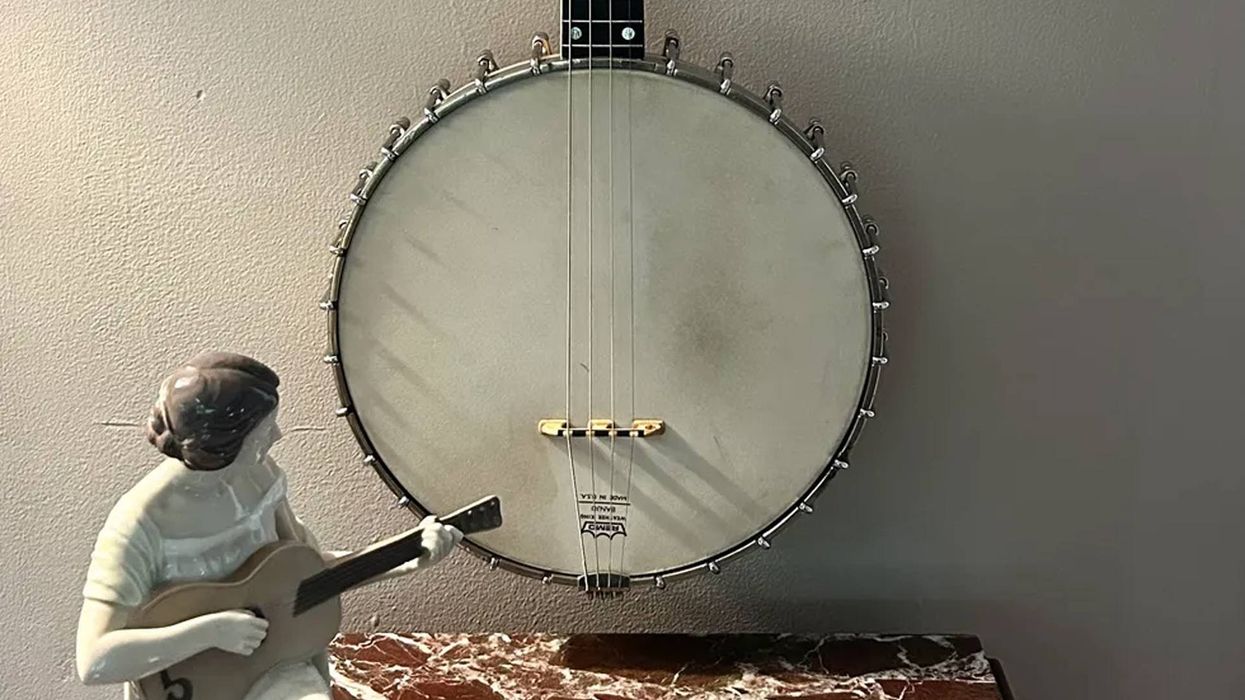
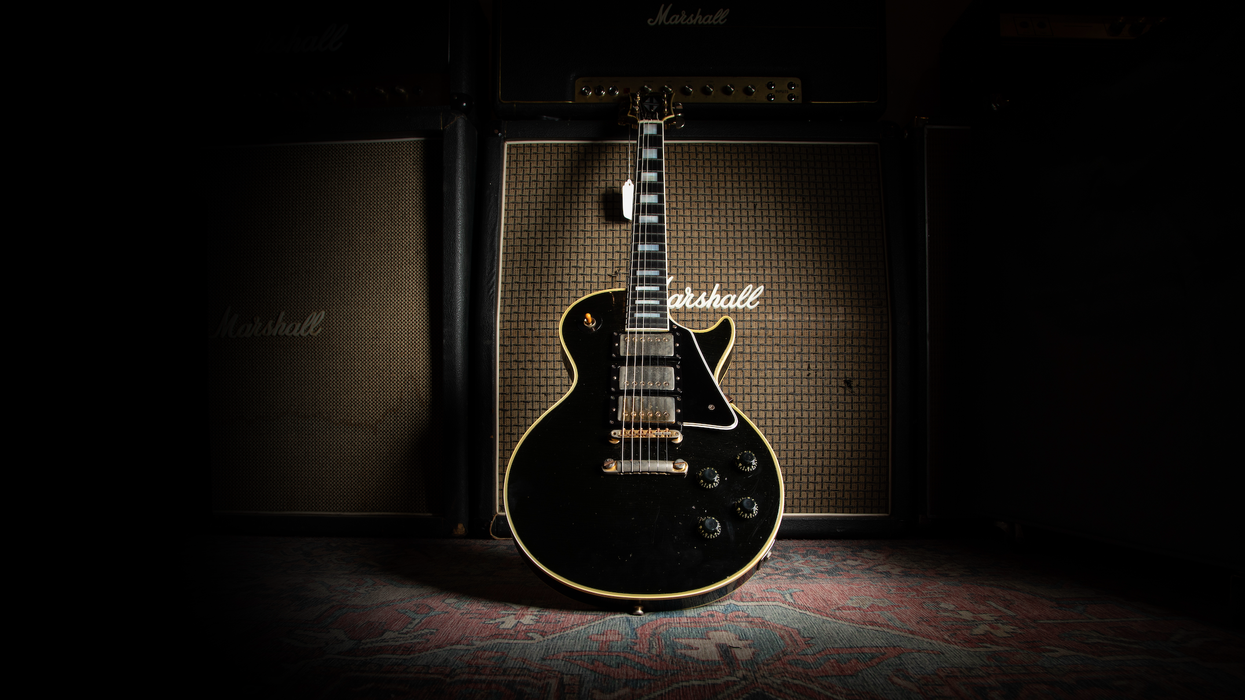
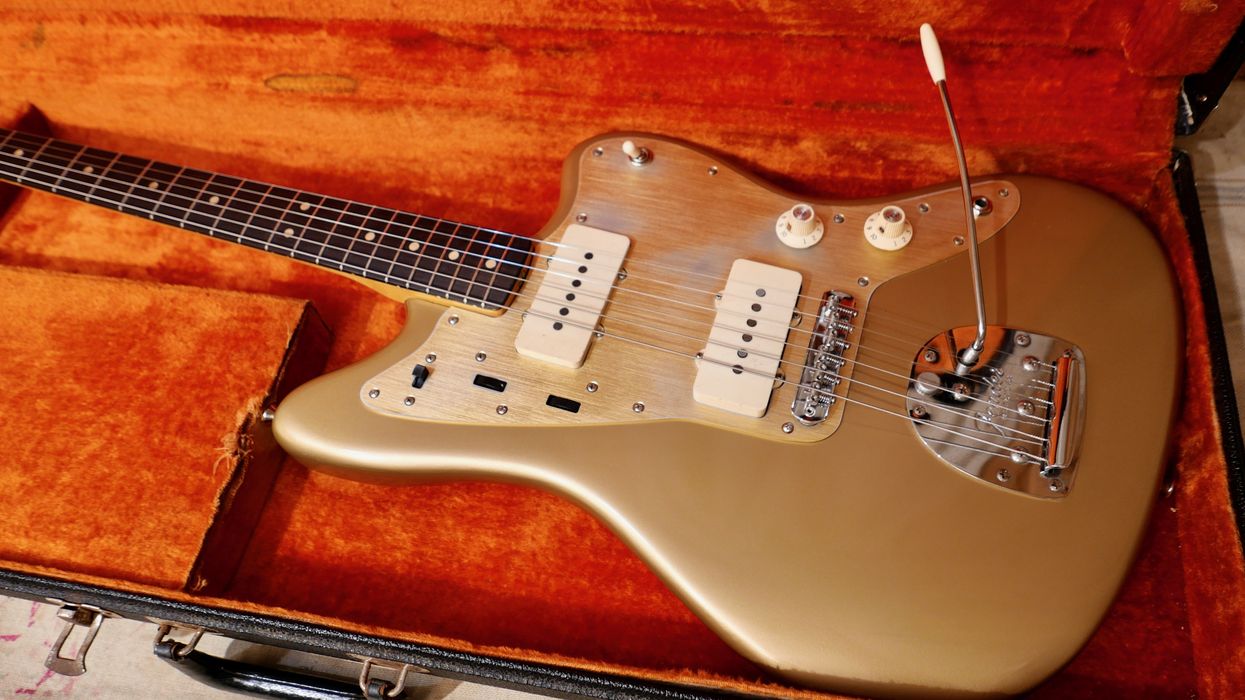
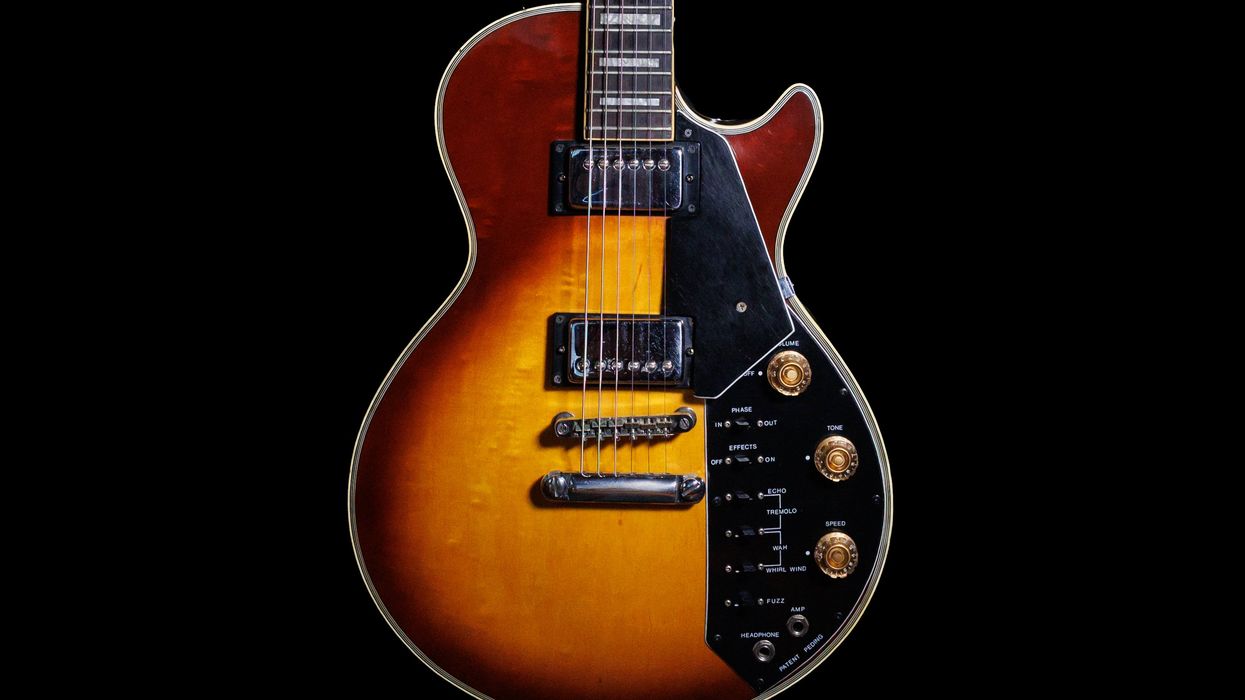





![Rig Rundown: Russian Circles’ Mike Sullivan [2025]](https://www.premierguitar.com/media-library/youtube.jpg?id=62303631&width=1245&height=700&quality=70&coordinates=0%2C0%2C0%2C0)


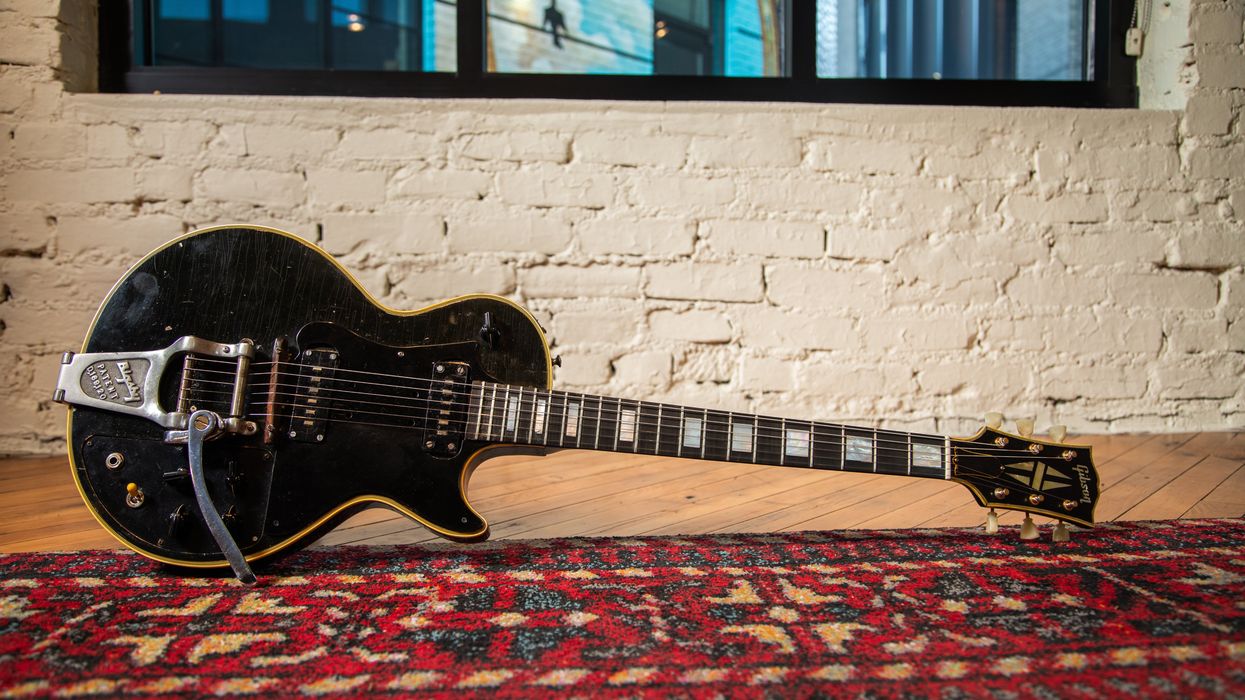
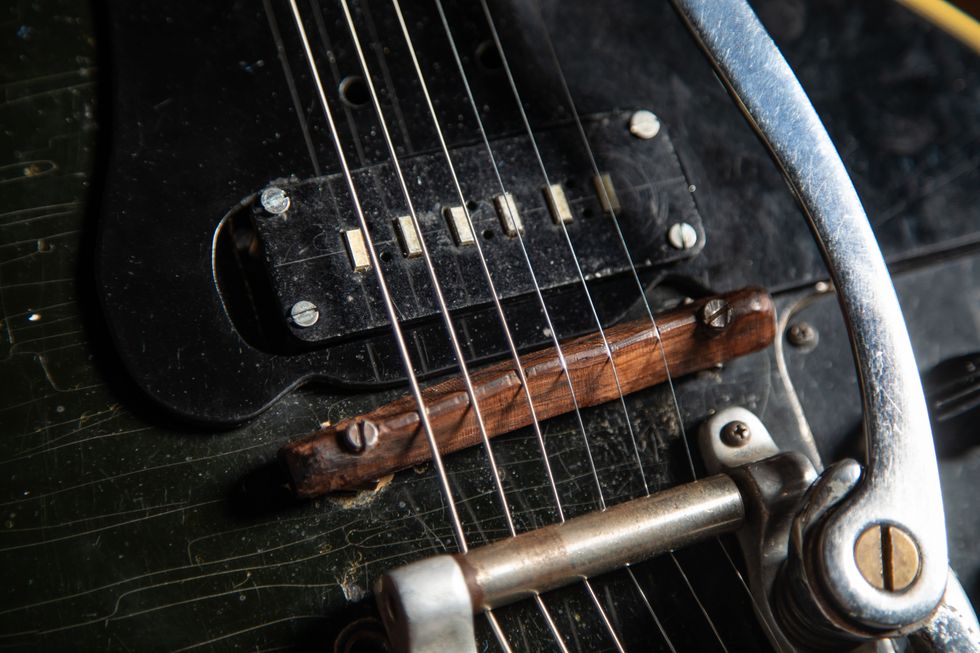
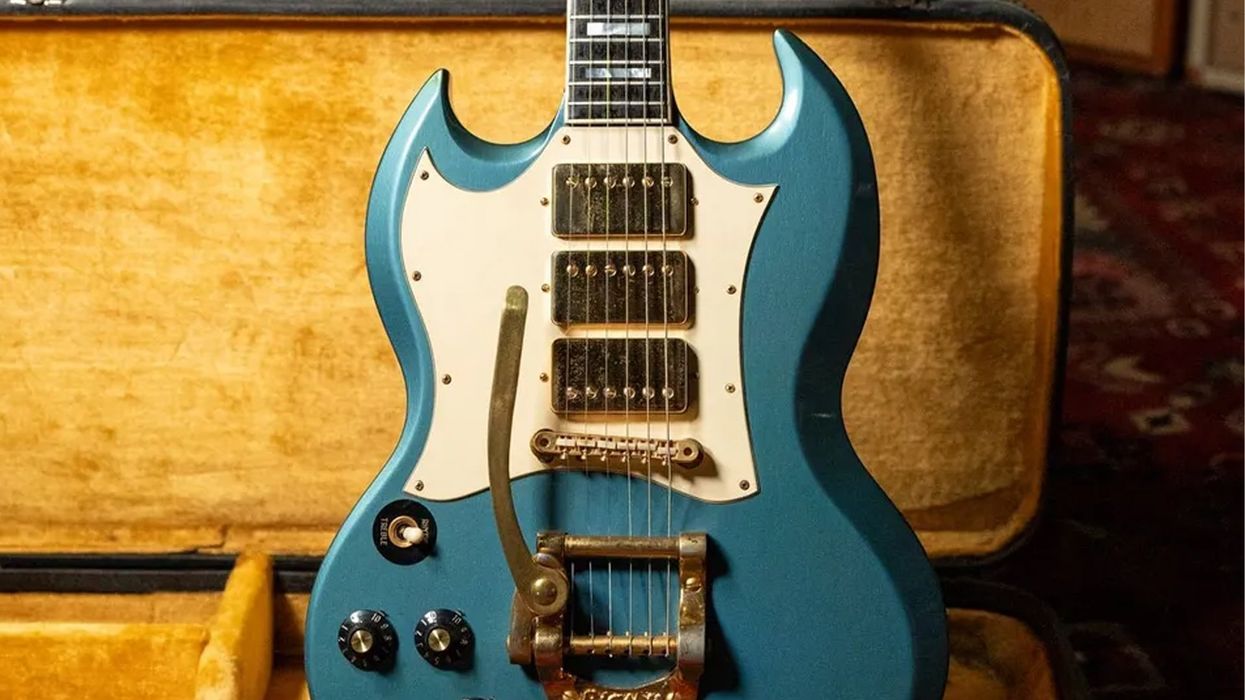
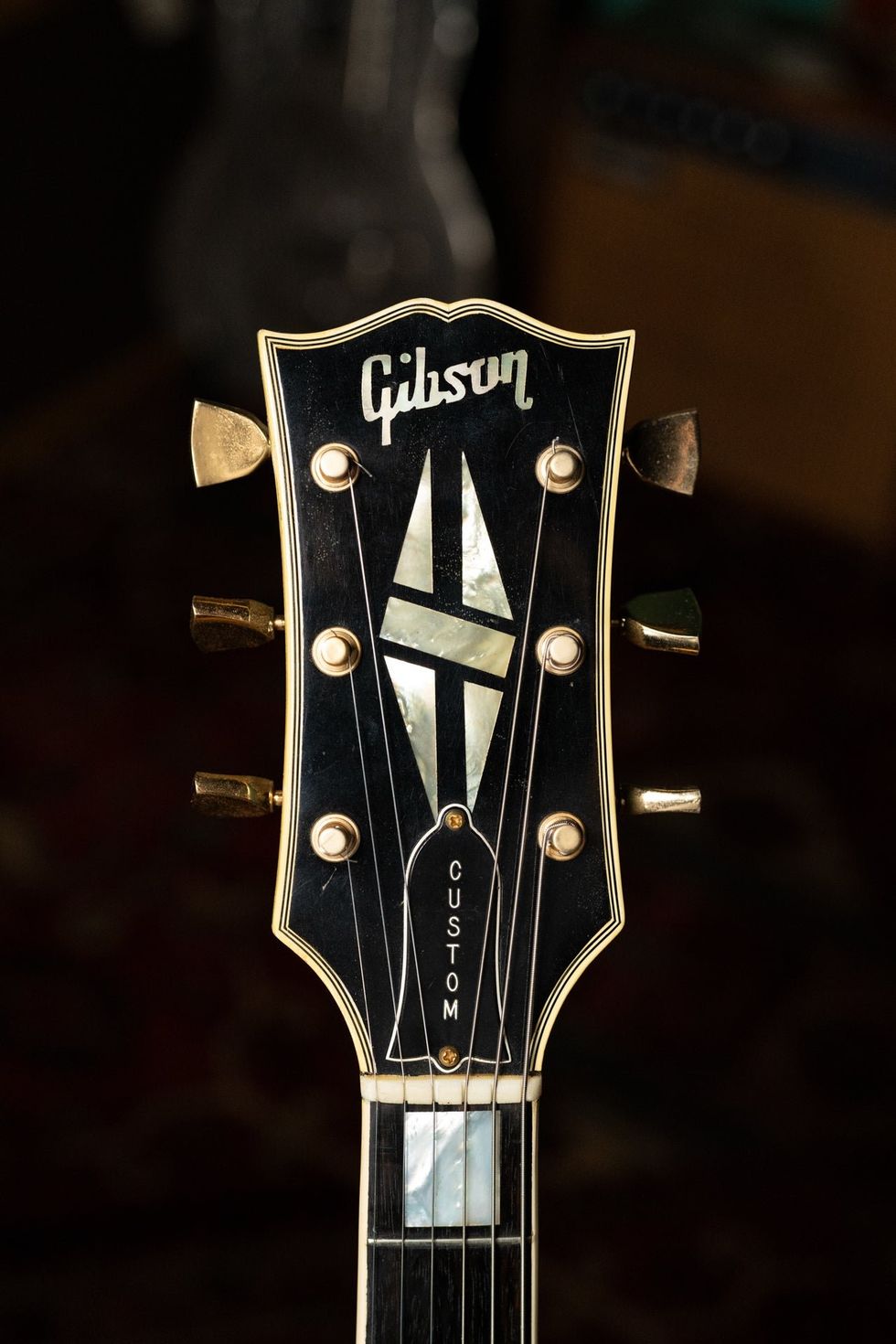
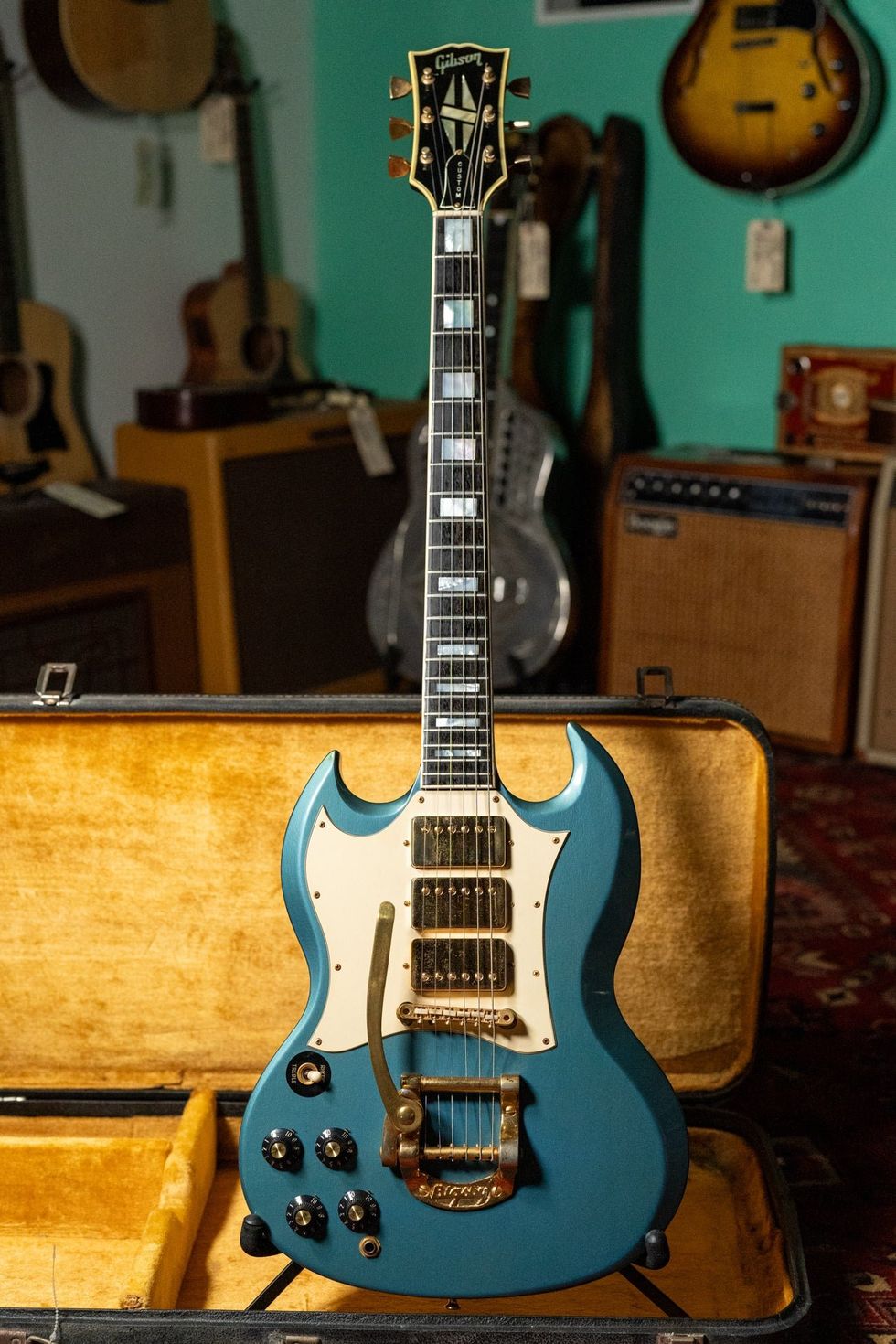 Whether or not Jimi Hendrix actually played this guitar might come down to how lucky its buyer feels.Photo courtesy of Imperial Vintage Guitars Reverb Shop
Whether or not Jimi Hendrix actually played this guitar might come down to how lucky its buyer feels.Photo courtesy of Imperial Vintage Guitars Reverb Shop